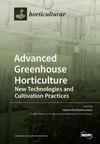Genome-Wide Identification of Litchi SPL Gene Family and Expression Analysis in Pericarp Anthocyanin Biosynthesis
IF 3.1
3区 农林科学
Q1 HORTICULTURE
引用次数: 0
Abstract
During the ripening of litchi (Litchi chinensis Sonn.) fruit, anthocyanin biosynthesis is crucial in providing vibrant coloring. Previous studies on anthocyanin-related transcription factors have made significant discoveries relating to plants. However, the role of the SQUAMOSA promoter-binding protein-like (SPL) transcription factors in anthocyanin biosynthesis has rarely been studied in litchi. SPL genes are widely involved in the developmental mechanisms of plants. In this study, a total of 17 SPL genes have been identified from the litchi genome. Phylogenetic analysis revealed that these genes were divided into eight groups (Group I-VIII). Analysis of gene structure conserved domains, conserved motifs, and miR156 target prediction showed that LcSPLs were highly conserved during evolution. RNA-seq analysis of litchi revealed that six LcSPL genes have a role in regulating anthocyanin biosynthesis. Further, weighted correlation network analysis (WGCNA) revealed LcSPL7’s role in anthocyanin synthesis and chlorophyll degradation in litchi fruit ripening. These findings collectively suggest that the LcSPL gene family plays an essential role in anthocyanin biosynthesis in litchi pericarp. In summary, comprehensive bioinformatics analysis of the SPL family expands our understanding of anthocyanin synthesis in litchi pericarp.荔枝 SPL 基因家族的全基因组鉴定及其在果皮花青素合成过程中的表达分析
在荔枝(Litchi chinensis Sonn.)果实的成熟过程中,花青素的生物合成对于提供鲜艳的颜色至关重要。以往对花青素相关转录因子的研究已经取得了与植物有关的重大发现。然而,SQUAMOSA 启动子结合蛋白样(SPL)转录因子在荔枝花青素生物合成中的作用却鲜有研究。SPL 基因广泛参与植物的发育机制。本研究从荔枝基因组中共鉴定出 17 个 SPL 基因。系统进化分析表明,这些基因被分为八组(I-VIII 组)。基因结构保守域、保守基序和 miR156 靶标预测分析表明,LcSPLs 在进化过程中高度保守。荔枝的 RNA-seq 分析显示,6 个 LcSPL 基因在调控花青素的生物合成中发挥作用。此外,加权相关网络分析(WGCNA)揭示了 LcSPL7 在荔枝果实成熟过程中花青素合成和叶绿素降解的作用。这些发现共同表明,LcSPL 基因家族在荔枝果皮的花青素生物合成中发挥着重要作用。总之,对 SPL 基因家族的综合生物信息学分析拓展了我们对荔枝果皮花青素合成的认识。
本文章由计算机程序翻译,如有差异,请以英文原文为准。
求助全文
约1分钟内获得全文
求助全文

 求助内容:
求助内容: 应助结果提醒方式:
应助结果提醒方式:


